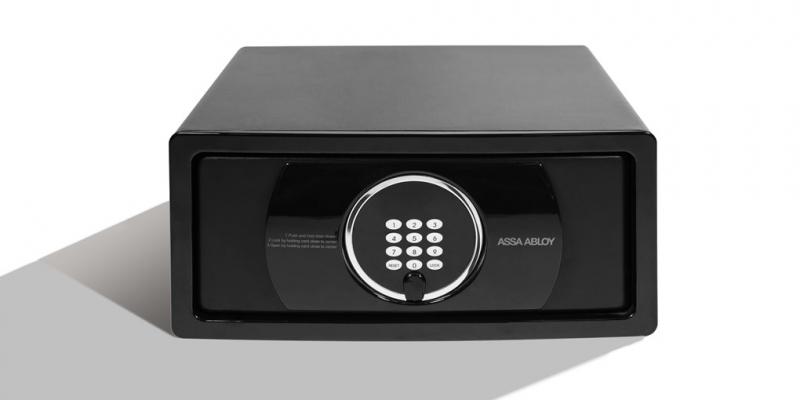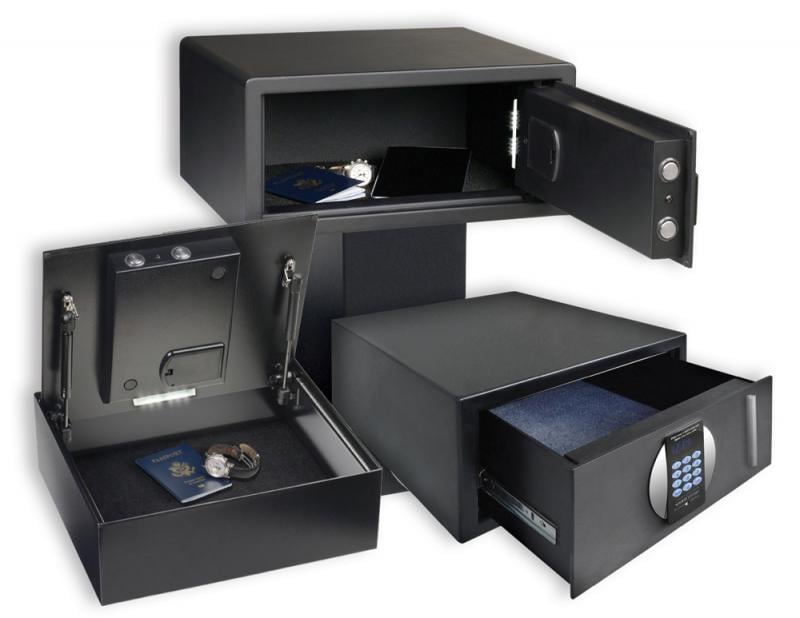By combining innovations in guestroom security technology with modern designs, guestroom safe providers are continually offering hoteliers effective hotel safe options to complement their rooms, regardless of style and need.
“The technology has gotten even more reliable,” said David Ginn, VP of sales, hospitality North America at Dormakaba. “The audit trails have improved as well—there is much more transparency as it has gotten better over time.”
Developments in radio frequency ID technology have allowed for easier guest access to in-room safes, including the ability to use their room keycard for access, said Nicolas Aznar, president of Assa Abloy Global Solutions. Bluetooth-enabled safe functionalities are also growing in popularity, allowing for easier access and extra security. Innovations in the software used to upload programming, change settings and transfer data between electric safes and service tablets are improving, particularly as security-based enhancements are being made.

“Using advanced security-management software, service tools can now provide full password protection for up to 25 staff members,” Aznar said. “Additionally, master key overrides for service tools are now more secure than the traditional mechanical override systems found in other manufacturer systems, ensuring that high security standards are consistently met.”
Additional new trends include additional security features such as two locking bolts and anti-tamper construction—a screwdriver or other device cannot be inserted under the door to force the door open, said Walt Strasser, EVP at Minibar Systems. Additional audit logs and new models such as a pull-out drawer and insertable wall designs also are trending, he said.
John Foley, VP of sales for Safemark, said guest-chosen user codes are still the most secure user interface. “Brands avoid combining door lock and safe access due to obvious security concerns,” he said. “Bulletproof audit trails outlining who last accessed the safe is overwhelmingly the most important criteria for security professionals.”
He advised hotels to make sure a company’s audit-trail software is brand-certified, which allows it to reside safely on property servers and reduces cyber hacks.

Do Guests Use In-Room Safes?
While guestroom safes are standard in most guestrooms, do guests really use them? The experts said guests’ engagement with safes has definitely increased over the years. “Guest utilization of in-room safes has increased in the last five years to nearly 50 percent usage,” Strasser said. “The user experience has been somewhat simplified with instructions printed directly on the front of the safe, making it easier for the guest to use.”
Many Fortune 500 companies also demand safes for traveling employees because laptops and digital devices carry some of the most valuable corporate assets, Foley added, and government agencies increasingly are demanding guestroom safes to secure firearms. “Continued guest expectation is that safes are now a standard in guestrooms, especially with international travelers or passport holders,” he said. “Domestic travelers expect a safe to secure jewelry and valuables.
Foley noted his company has seen an increased demand to accommodate electronics for sports teams on weekends when on the road.
“Guests continue to expect enhanced in-room security options, and the consistent engagement levels with in-room safe systems have proven that this is not expected to change anytime soon,” Aznar said. “However, providing safes with ease-of-use and enhanced accessibility can increase guest engagement across individual properties.”
